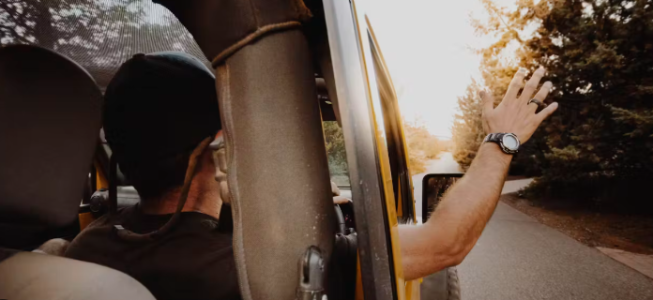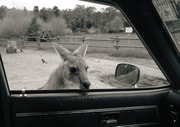A wave, a honk, or a headlight flash? Road etiquette isn’t universal – and that brings risks
- Replies 7
Most of us have a way of saying “thank you” on the road. A wave in the rear-view mirror, a quick lift of the hand from the wheel, maybe even a flash of the indicators. We assume other drivers will understand what we mean. But do they?
The truth is, there’s no universal “road language”. What looks like courtesy to one person can be confusing to another.
And while road safety is often framed in terms of how good our roads and rules are, or how safe our cars are, or how skilful the drivers are, it also depends on something subtler: whether we can understand other drivers behind the wheel.
So what do we know about the role of non-verbal cues in road safety? And how do they change in different cultures and contexts?
A confusing unspoken road etiquette
You might assume there’s a shared etiquette on Australian roads: a wave when someone lets you in, or a quick beep to hurry someone along. But survey results show there is less agreement than you might think.A recent national survey of 2,000 drivers found more than half regularly use unofficial signals, yet they often interpret these signals differently.
According to the survey, the most common way to say “sorry” is a raised hand, used by nearly three in four drivers. But the same gesture also doubles as a thank you, or general acknowledgement.
Saying thank you also takes different forms. About 60% of drivers wave through the rear-view mirror, 18% stick their arm out the window, and 12% flick their indicators.
When it comes to the horn, most drivers use it as a gentle prompt, but about one-quarter admit to honking in frustration.
Two-thirds of drivers interpret a headlight flash as a warning for police or speed cameras ahead, while almost 10% see it as a courteous invitation to proceed.
Generational quirks add another layer of confusion. Gen X drivers (ages 45–60) are most likely to point if they see a flat tyre, while Gen Z (18–28) prefer to flash their headlights. Meanwhile Baby Boomers (61–70) and Millennials (29–44) mainly rely on traditional gestures: a wave, a nod, or a raised palm.
Another large survey of 2,000 people, conducted by life insurance company Youi in 2024, laid out what people consider “unofficial” road rules.
Some examples included waving when given way to, lifting a finger in greeting on country roads, merging like a zipper and yielding to pedestrians (even outside crossings).
However, although almost everyone recognised these customs, far fewer practised them consistently. About 90% of respondents said they know they should wave in thanks, yet only about 60% said they always do.
Road language around the world
A global review of implicit driving cues published last year found gestures and signals carry strikingly different meanings in different countries.In Japan, quick headlight flashes can mean an apology, or a thank you – reflecting the general politeness inherent in Japanese culture. In Italy, the same gesture is a warning. And in Russia or Hungary, a string of flashes can be a way of showing gratitude.
In Hawaii, the shaka or aloha wave is a way of showing politeness on the road. And in India, the distinctive head wobble, used in many social settings, can also appear on the road to signal agreement or gratitude.
Horn use also varies widely between nations. In Germany, Switzerland, and Scandinavia, use of the horn is legally restricted to emergencies.
In Japan, it can serve as a polite signal to let other drivers in.
And in countries such as India, Vietnam, Thailand and Egypt, beeping the horn is a socially accepted part of everyday driving – and a form of negotiating passage in congested streets.
Why it matters
While it may seem trivial, these signs and signals shape how smoothly and safely we share the roads. A misunderstood flash or wave can cause hesitation, frustration, or even a mishap.In that sense, road safety isn’t just mechanical, or formulaic. It’s also about how well we understand each other. It is, at its core, a culture: a shared performance of signs and signals that can denote warmth in one place, and irritation in another.
This can present challenges in multicultural societies such as Australia, where drivers from around the world bring different “road languages” with them.
Perhaps it’s time to think about whether road communication needs more attention. None of Australia’s states include courtesy or non-verbal communication in their driving tests.
With much at stake, and with so much room for confusion, it might be worth developing a standard “road language dictionary”. This simple guide could sit alongside formal road rules and feature as a small but important part of driver training.
A shared road language could spare us all a lot of frustration, and ultimately help keep us safe.
This article is republished from The Conversation under a Creative Commons license. Read the original article.








